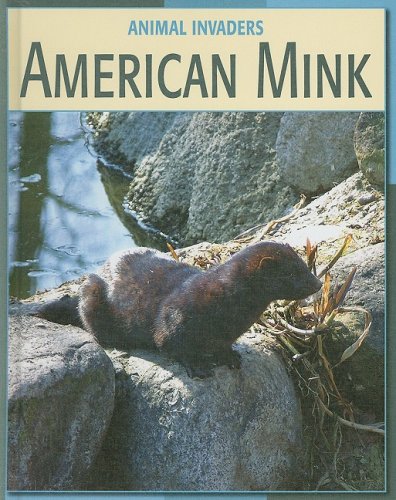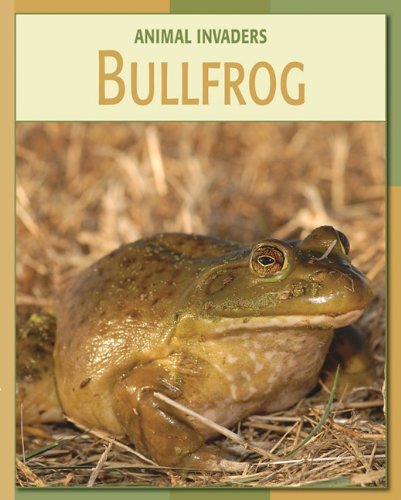-
Sea Lamprey
Barbara A Somervill
Library Binding (Cherry Lake Publishing, Aug. 1, 2008)the Sea Lamprey have invades the Great Lakes where they have killed off native species and harmed the fishing industry. Find out hoe they arrived, the problems they cause and other places that are on the lookout for these animals. R
R
-
American Mink
Susan H Gray
Library Binding (Cherry Lake Publishing, Jan. 1, 2008)American mink have beautiful, thick, glossy fur. At one time, many were exported to other countries where farmers raised them for their fur. Find out what happened to native species when fur went out of fashion and many minks were released into the wild. W
W
-
Zebra Mussel
Susan Heinrichs Gray
Library Binding (Cherry Lake Publishing, Jan. 1, 2008)Zebra Mussels are known for their striped shells and clingy habits. These natives of Europe and Asia traveled to North America in by ship. Learn more about why the zebra mussel poses a threat to native animals and the health of North American waterways. Y
Y
-
Emerald Ash Borer
Susan H Gray
Library Binding (Cherry Lake Publishing, Jan. 1, 2008)Emerald Ash Borers have shiny green bodies and an appetite for ash trees. This native Asian insect hitchhiked to North America and has killed millions of ash trees. Learn more about the emerald ash borer and what is being done to try to stop its spread. X
X
-
Monitor Lizard
Barbara A Somervill
Library Binding (Cherry Lake Publishing, Jan. 1, 2010)The Monitor Lizard is large; adults can grow up to 7 feet in length. A vicious predator that will eat anything it can fit into its mouth. Native to Africa, the Monitor Lizard has successfully established a new home in Florida, disrupting an already delicate ecosystem.
-
Bullfrog
Susan Heinrichs Gray
Library Binding (Cherry Lake Publishing, Jan. 1, 2009)Bullfrogs are big eaters, consuming almost anything that fits in their mouths. Meals include birds, turtles, snakes, and even other frogs. At one time, bullfrogs lived only in North America and east of the Rocky Mountains. Today, the large frogs have invaded many parts of the world, causing problems for native wildlife. Look inside to discover how bullfrogs became an invasive species and what is being done to help stop their spread. T
T
-
Africanized Honey Bee
Barbara A Somervill
Library Binding (Cherry Lake Publishing, Jan. 1, 2008)Honeybees are known for their familiar buzzing and honey production. Learn how an experiment meant to increase honey production created aggressive Africanized honeybees that have taken over territory and caused big problems for beekeepers, farmers, and anyone unlucky enough to disturb them. V
V
-
Australian Spotted Jellyfish
Susan Heinrichs Gray
Library Binding (Cherry Lake Pub, Jan. 1, 2010)Looks at the Australian spotted jellyfish and examines how it became an invasive species along the Gulf Coast and other places outside of its native northern Australia, how it causes problems, and how people have attempted to deal with it.
-
Small Indian Mongoose
Barbara A. Somervill
Library Binding (Cherry Lake Pub, Jan. 1, 2010)Looks at the small Indian mongoose and examines how it was introduced to control rats but became an invasive species on islands outside of its native South Asia, how it causes problems, and how people have attempted to deal with it.
-
Starling
Susan Heinrichs Gray
Library Binding (Cherry Lake Publishing, Jan. 1, 2008)Starlings have glossy feathers and are aggressive competitors for nesting sites. Native to Europe and Asia, these birds were introduced to North America, Australia, and South Africa. Find out why these feathered invaders pose a threat to native birds species and farm crops. S
S
-
Asian Carp
Barbara A Somervill
Library Binding (Cherry Lake Publishing, Jan. 1, 2008)Asian carp have big appetites and can leap out of the water when startled. They were brought to the United States from their native Asian habitats to control algae growth on fish farms. Find out what happened when some of these big, jumping fish escaped and made their way up the Mississippi River. R
R
-
Gray Squirrel
Barbara A Somervill
Library Binding (Cherry Lake Publishing, Jan. 1, 2008)Gray squirrels are known for their bushy tails and hoarding habits. These North American natives were imported to parts of Europe and South Africa as pets, but quickly went from pets to unwanted pests. Learn more about the problems caused by invasive gray squirrels and what can be done to solve them. V
V